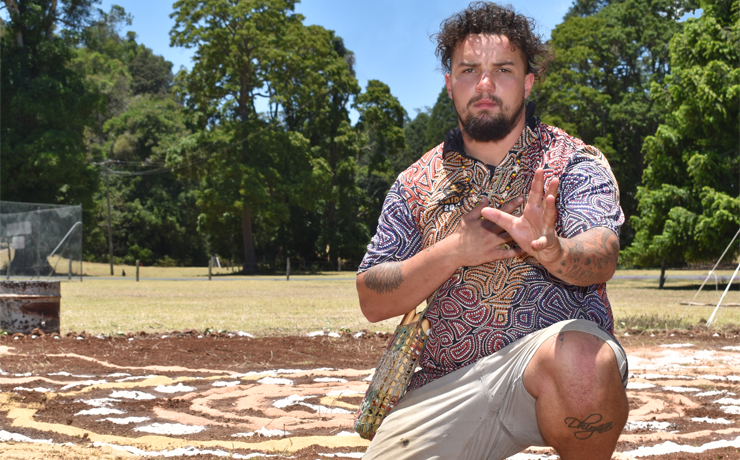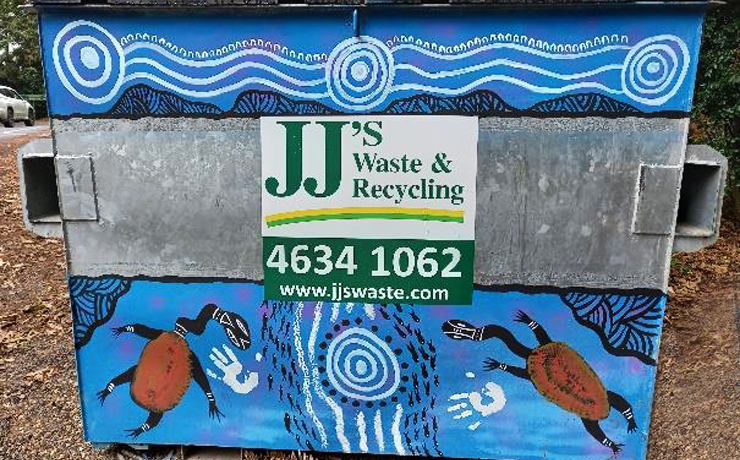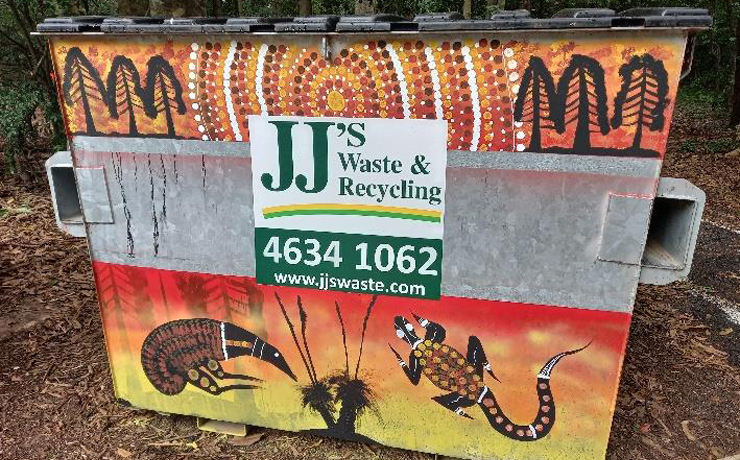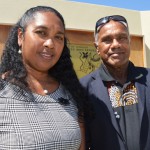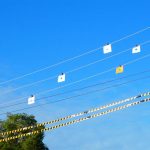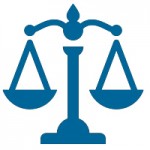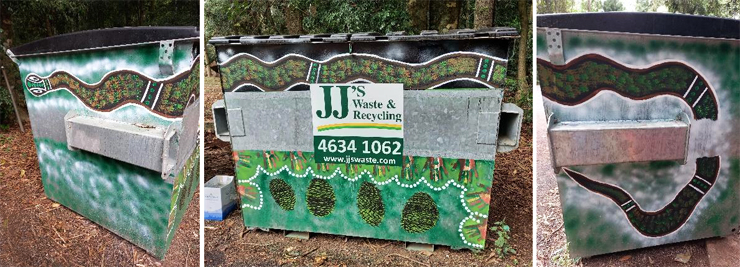
April 15, 2021
Three industrial waste bins on the Bunya Mountains have a new look thanks to artist Miri and the Bunya Mountains Community Association Inc (BMCAI).
The project was initiated by BMCAI and funded by the South Burnett Regional Council’s Community Grants Program – Indigenous Affairs Fund.
Bonye Biar (Bunya Mountains) is one of the most significant gathering places in Australia for Indigenous Australians. It is also a key tourism destination.
BMCAI secretary Carol Weekes and Miri (Damon Anderson) said that to date, there had been minimal promotion, education or sharing of information about Indigenous culture on the Bunya Mountains.
The project provided the opportunity for local artists to express their connection to country, exhibit their work on country, and tell their stories through art for all who pass by.
The three waste bins, at the top of Bunya Avenue, are now an art installation, providing a more pleasant vista to what is typically thought of as “the rubbish area”.
Indigenous artists, led by Miri, painted the three bins, and each now tells a story (as explained by Miri):
- The Green Bin represents the health of country and healing of the country, with Gabul the Carpet Snake being the guardian of all country. The four bonye (bunya) cones are representing the Wakka Wakka four skins system – Bunda, Barrang, Balguin and Dherwain – which was traditionally very important when marriage was being arranged on the mountain. The hand prints are representing the elders and ancestors that look after their people as they travelled on country.
- The Blue Bin represents Googagu (water). Water is life and traditionally the Indigenous peoples followed the water systems to Bonye Biar every three years for ceremony. Also represented are the Mior (freshwater turtle) this being one of the main food sources when travelling on country for many people and tribes. The Mior is totemic, so the tribes would hunt and kill in the most respectful way. At the top of the bin are the waterhole symbols. The three main sacred waterholes for the area are the Ban Ban, Coomba and Lake Broadwater waterholes, which were very sacred because they were birthing areas for many of the mob. Also represented is Dhakkin Yuini (the rainbow spirit snake) who travelled through this area.
- The Red Bin represents country. Country is very important and Wakka Wakka look at all country as sacred, not just national parks and reserves, but all country is sacred. Everywhere they walked is country and sacred songs and stories were shared and passed on as they walked and travelled through country. This painting represents sacred lands and songlines, with the emu and goanna being two of the artist’s Yuri (totems) from his other country, from where he descended and travelled to Wakka Bonye Biar
“BMCAI sincerely thanks the artists, JJ Richards Waste Management Services and South Burnett Regional Council for their support for this Project,” Craol said.
